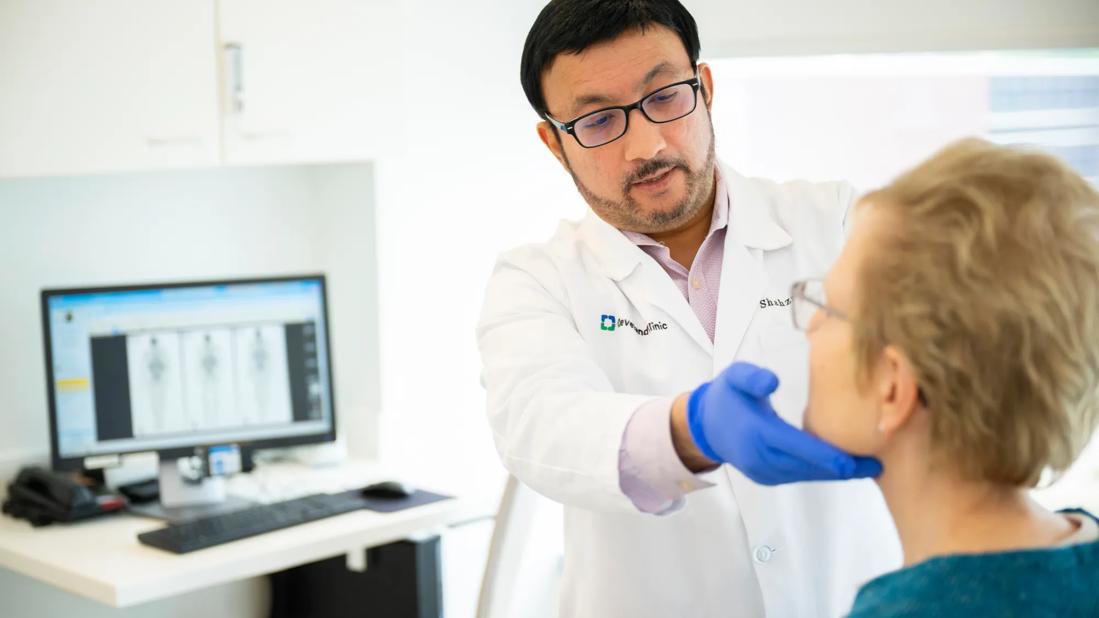Multi-specialty coordination essential for improving quality of life

The plasma cell disorder light chain AL amyloidosis causes fatigue, weight loss, numbness and tingling, diarrhea, constipation, bleeding, difficulty with swallowing, bruising, anorexia or cachexia, hypotension, lightheadedness, mood issues and often multiple organ dysfunction. Treatment can be complex, and secondary symptoms are challenging to manage.
Advertisement
Cleveland Clinic is a non-profit academic medical center. Advertising on our site helps support our mission. We do not endorse non-Cleveland Clinic products or services. Policy
Because of this, a team of researchers led by Director of Palliative Care at Rutgers Robert Wood Johnson School of Medicine Muhammad Hamza Habib, MD, recently conducted an evidence-based review of the role of palliative care in disease management.
The intricacies of this condition make it critical that palliative care be involved as early in disease presentation as possible. “Depending on disease severity, patients may improve with chemotherapy and immunotherapy, but there is often great uncertainty during the rocky first months they’re receiving treatment,” says Shahzad Raza, MD, a hematologist at Cleveland Clinic and co-author of the study. Due to the rarity of the disease, it is often not diagnosed until patients are in later stages once it becomes multisystemic. Care at these later stages involves a balancing act between the heart and kidneys.

Palliative care brings an interdisciplinary approach to connect hematologists, cardiologists, nephrologists, gastroenterologists, nurse practitioners, social workers, and others on the medical team to ensure a more holistic approach to the patient's care.
Regardless of disease stage, patients need to be treated at an amyloidosis center so they have access to the capabilities, equipment and multispecialty support this condition requires. “This is a rare disease that is underdiagnosed and often misunderstood,” says Dr. Raza. “Patients may go to the ER and mistakenly be given fluids for dehydration, but this can cause pulmonary edema in patients with heart weakness.
Advertisement
Likewise, depression is a common symptom of the disease, but these can negatively impact the heart, so you need someone coordinating care who understands the disease and its myriad implications.”
Studies have demonstrated the ability of palliative care to reduce emergency room visits and rehospitalizations. A study of 186 oncology patients found that early integration of palliative care improved quality of life. A randomized trial of patients with acute myeloid leukemia also found significant improvements in quality of life, psychological distress and end-of-life care when a palliative team was involved.
Sometimes there are no easy answers when it comes to symptom management of this disease. If an AL amyloidosis patient with kidney failure suddenly has delirium, what treatment is best? How do we address ongoing fluid overload? And how can we improve GI issues in the face of autonomic instability?
For these issues, each center of excellence has an amyloidosis program to connect disparate specialists who have an in-depth understanding of the disparate characteristics of the disease. They meet regularly to discuss complex cases. Involving palliative care in these discussions is essential. They can serve as a liaison between hematologists/oncologists and other specialists in terms of assessment and treatment planning.
Palliative medicine teams are well versed in medication optimization, which may involve a range of measures such as loop diuretics, potassium management, beta blockers, anesthetics, anticonvulsants, steroids and/or dietary modifications, just to name a few. It’s also common for patients with AL amyloidosis to have anxiety, depression or sexual dysfunction. The working relationships between palliative medicine and psychiatry can help offer supportive care for patients struggling with these issues.
Advertisement
The rate of survival for AL amyloidosis is roughly 43% at five years. The review's authors noted, "In the initial phases of illnesses, the focus is on longevity, but disease progression calls for serious and open discussion with the patient and family about the overall state of illness and realistic prognostic expectations.” Goals of discussion should involve:
Another often overlooked area where palliative care is beneficial is in caregiver support. Depression is common in caregivers, due to the mental and physical toll involved with care. “Bringing a loved one back and forth to specialists, rushing to the ER and dealing with multiple doctors can be overwhelming,” says Dr. Raza. “Understanding the caregiver burden is very important.”
In addition to its focus on multidisciplinary care, Cleveland Clinic is looking for further ways to minimize the burden on patients and families facing this disease. This may include exploring the role telemedicine can playin AL amyloidosis care. For example, some patients would respond if they were able to receive treatment, but they can’t physically withstand continual trips to the infusion center or they live in a remote area. The hope is that in the future palliative care can help facilitate the ability for these infusions to take place at patients’ homes. This would bring hope to those for whom travel is a limiting factor.
Advertisement
Advertisement
Advertisement

Early results show patients experiencing deep and complete response

Model shows promise in differentiating from hypertrophic cardiomyopathy and other conditions

On-demand stem cell mobilizer is an effective salvage strategy

Integrated care model reduces length of stay, improves outpatient pain management

Palliative nurses improve quality of life

When and how a multidisciplinary palliative care clinic can fill unmet needs for this population

Newer medications pivotal for improving gastrointestinal symptoms in patients with cancer

Palliative care specialists know hard conversations can also be valuable ones